Lederer Central Impulse Chronometer
Following the initial introduction as a concept watch at last year’s Grand Prix d’Horlogerie de Genève, the Central Impulse Chronometer now takes on its final form. This high-performance chronometer with a revolutionary escapement is housed in a 44 mm case, surrounded by two round and domed crystals that have the effect of slimming the timepiece. Inside, an entirely new caliber, the result of several years of research, that merges a new type of escapement, constant force and a double gear train. The Central Impulse Chronometer’s dial captures the imagination with a pair of synchronized seconds hands moving in opposite directions – within two openings in the watch face bordered by interlaced circles forming the figure eight. The movement’s architecture and performance are matched by a refined execution and meticulous finishing down to the smallest detail.
The watch that elicited such admiring gazes in its proof-of-concept iteration at the industry’s ‘Oscars’ in September 2020 has completed its aesthetic journey. Available in two limited editions, the Lederer Central Impulse Chronometer comes in an elegant case measuring 44 mm in diameter with a thickness of 12.2 mm – a profile refined by domed crystals front and back to emphasize this horological masterpiece’s slim silhouette. The dial is remarkable by the unconventional view afforded on the exceptional mechanics inside: two circular opening reveal two synchronized hands moving in opposite directions. The sense of an artistic vision of the passage of time further comes through in the way the two circles are interlocked in a figure eight, a symbolic message of harmony, infinity and rebirth, of good fortune and prosperity for other cultures.
The Calibre 9012, which builds on a unique three-dimensional architecture, is the product of several years of research. Among other things, this research yielded the system that gave its name to the piece, an entirely new high-performance double impulse escapement: the Central Impulse Chronometer.
The destination is the journey
In his workshop in St Blaise near Neuchâtel, in the Jura Mountain range known as the cradle of Swiss watchmaking, Bernhard Lederer decided to turn his nearly 40 years of experience to the Independent Double Wheel Escapement conceived in the late 20th century by George Daniels. It is important to note that Daniels himself had been standing on the shoulders of Abraham Louis Breguet who developed the concept of a natural escapement around the time of the French Revolution. What Bernhard Lederer set out to do, was to solve the weaknesses linked to this kind of escapement. For this reason, the escapement of Lederer’s Central Impulse Chronometer is of a different design.
Bernhard Lederer’s creation comprises two independent escapement wheels operating in alternation and connected to an anchor that is absolutely one of a kind. Its profile, rubies, lift angles, even the way it comes into contact with all the components it guides, make this an exceptional creation.
The freedom to optimize
To further optimize precision of his Caliber 9012, Bernhard Lederer installed these two escapement wheels at the end of two separate gear trains, each with its own barrel and its own 10-second constant force remontoire. In smoothening the driving force to the extreme, optimizing the geometry of the escapement parts, paring down the weight of these energy-intensive components and reducing the internal friction of the escapement to a minimum, Bernhard Lederer has achieved a degree of watchmaking perfection rarely seen. By making the two escapement wheels independent of each other, he essentially freed them.
This sophistication also comes through in the fact that the two second hands, each linked to its own escapement wheel, are permanently synchronized and show no drift in relation to each other. The precision of each watch is attested by a chronometer certificate.
The Central Impulse Chronometer escapement
The initial spark for this project came from George Daniels work, with whom Bernhard Lederer had had numerous exchanges. Lederer decided to revisit Daniels’ work and adapt it to a wristwatch, well aware of all the challenges this implied. For one thing, he opted for a frequency of 3 Hertz to address how a watch is worn on the wrist arm constantly passes on shocks to the movement’s regulating organs. They must adapt to changing dynamics and resume normal operations as quickly as possible, a sine qua non requirement for precision under everyday conditions.
Inertia where it matters
One of the innovations introduced by the Central Impulse Chronometer is to use titanium for the components – instead of traditional steel. Much lighter, the moving parts now have less inertia, which enables them to restart more quickly and consume less energy. As a result, the impulses generated by the escapement wheel to the balance wheel are optimized and disturbances are reduced, which ensures isochronism and therefore movement precision.
The energy to power the movement is transmitted from two barrels via two independent gear trains, each linked to a dedicated escapement wheel. Furthermore, Bernhard Lederer has integrated a remontoir d'égalité, i.e. a constant-force mechanism, to accumulate a buffer stock of energy in a spring similar to that of the barrel, but slightly less substantial. It is recharged at 10-second intervals, thus equalizing the driving force with a homogeneous degree of torque to ensure the energy delivered to the balance wheel varies extremely little if at all.
Poetry in the science of tribology
One element that sets the Central Impulse Chronometer escapement apart is the anchor – the metronome of the timepiece. Here, Lederer reimagined the geometry of the central pallet to increase performance. Now concave, it reduces the contact surface, avoiding any recoil of the escapement wheels.
The impulse, given directly along a straight line connecting the escapement wheel to the balance wheel, is thus theoretically perfect. The axis for the impulse is constant in time, even when the balance wheel has a low amplitude, as caused by shock for instance. This reduces friction, further ensuring that energy distribution to the balance wheel is optimally timed to obtain improved isochronism, hence improved stability.
The elegance of an authentic chronometer
Besides technical mastery, Bernhard Lederer timepieces exemplify sophisticated design, each creation bearing witness to a strong artistic sensibility – and the Central Impulse Chronometer is no exception. The 44 mm round case in white gold has soft, elegant lines. Its thin polished bezel enhances the view on the dial. Two circular openings for the seconds hands offer a view of the Calibre 9012 and its most distinctive components, the rewinding mechanism and escapement.
On the case back, a second sapphire crystal, domed and engraved and beveled – and a challenge to machine – that is identical to the crystal on the front. It showcases the three-dimensional, symmetrical, oblique and openworked architecture of the Caliber 9012. The barrel, wheel, winding mechanism, escapement and balance bridges are all skeletonized with slender geometric shapes.
Pinnacle of watchmaking creativity, engineering and design
The two large golden barrels contrast with the movement’s rhodium-plated finishes. The wheel spokes are tangential curves with a unique profile, a Bernhard Lederer hallmark. The level of finishing is commensurate with the level of mechanical sophistication the Central Impulse Chronometer embodies. The variety and quality in the execution – from polishing, inward and outward beveling, graining, engraving and satin-finishing to juxtaposing matte and glossy surfaces – only serve to further magnify the Central Impulse Chronometer’s spectacular three-dimensional architecture of movement.
The Central Impulse Chronometer by Bernhard Lederer is a masterpiece of meticulous and discreet watchmaking whose technical prowess and design excellence is underscored by accomplished craftsmanship and exceptional finishing. The Central Impulse Chronometer is available in two limited series in two limited series in white gold, 25 pieces with a blue dial and the other 25 pieces with a rhodium-plated dial.
Technical specifications:
Lederer Central Impulse Chronometer
Reference: 9012
Limited edition of 25 pieces per dial colour
Case
- Material: Stainless steel
- Diameter: 44 mm
- Thickness: 12.2 mm
- Open caseback, sapphire glass with anti-reflective coating
- Water-resistant to 30 meters
Dial and hands
- Guilloché (exclusive Lederer motif) with two circles interlocked in a figure eight.
- Available in two colors, rhodium and dark blue.
Movement
- Mechanical, hand-wound
- Number of components: 210
- Number of jewels: 45 rubies
- Frequency: 21,600 vph (3 Hz)
- Diameter: 39.3 mm
- Thickness: 5.98 mm
- Power reserve of 42 hours
Special features
- Two barrels
- Two independent gear trains
- Two constant-force remontoirs
- Two escapement wheels with central impulses
Winding & setting
- Two-position winding stem:
- Position 1: manual winding
- Position 2: setting the time
Finishing
- Frosted with hand-beveled bridges, wheels with circular graining and hand-beveled spokes, steel parts black polished.
Functions/Indications
- Hours, minutes, small seconds at 8 and 11 o’clock
Strap and buckle
- Blue alligator strap
MSRP: CHF 128'000 (before taxes)
For more information, please visit ledererwatches.com
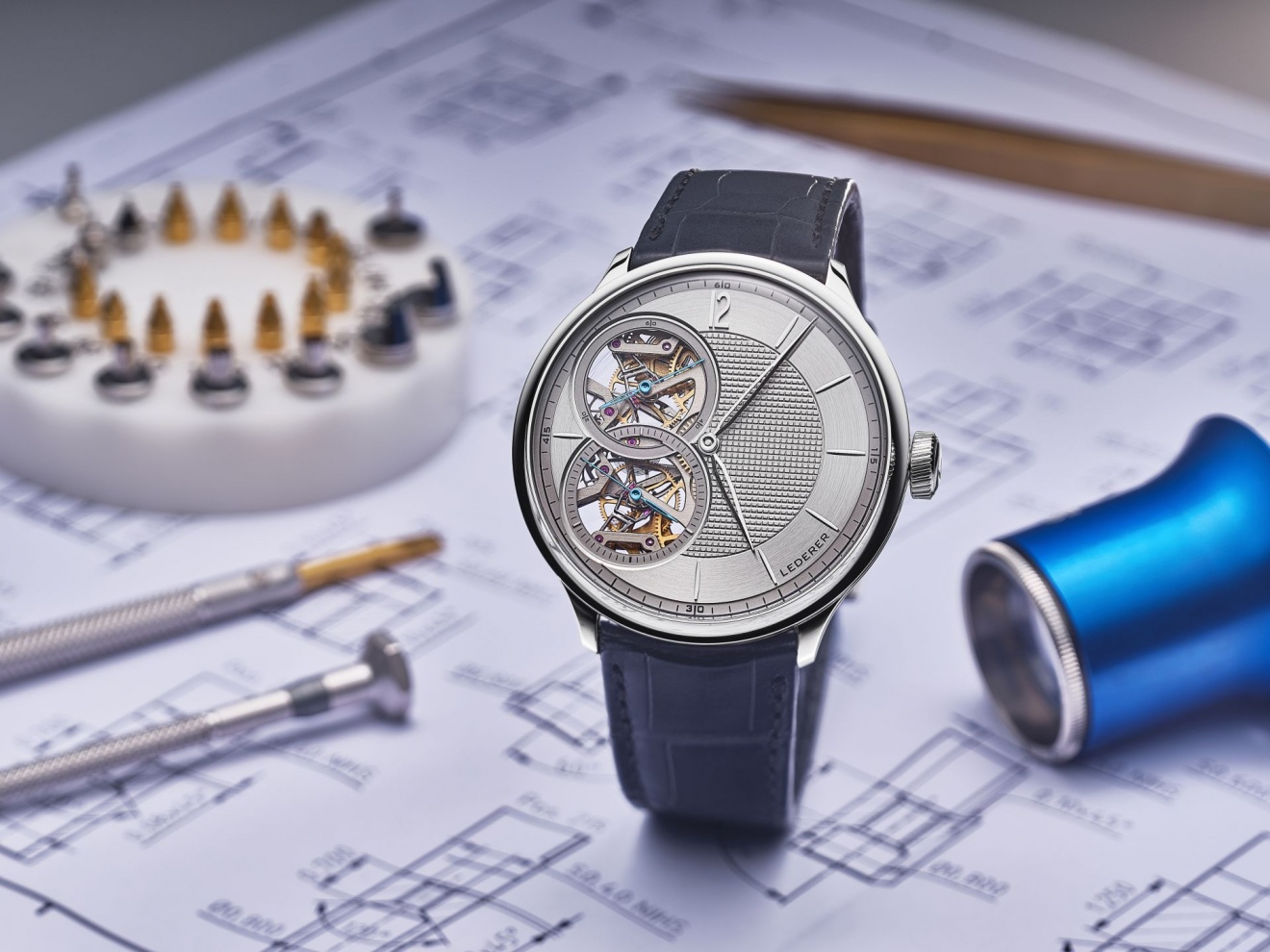

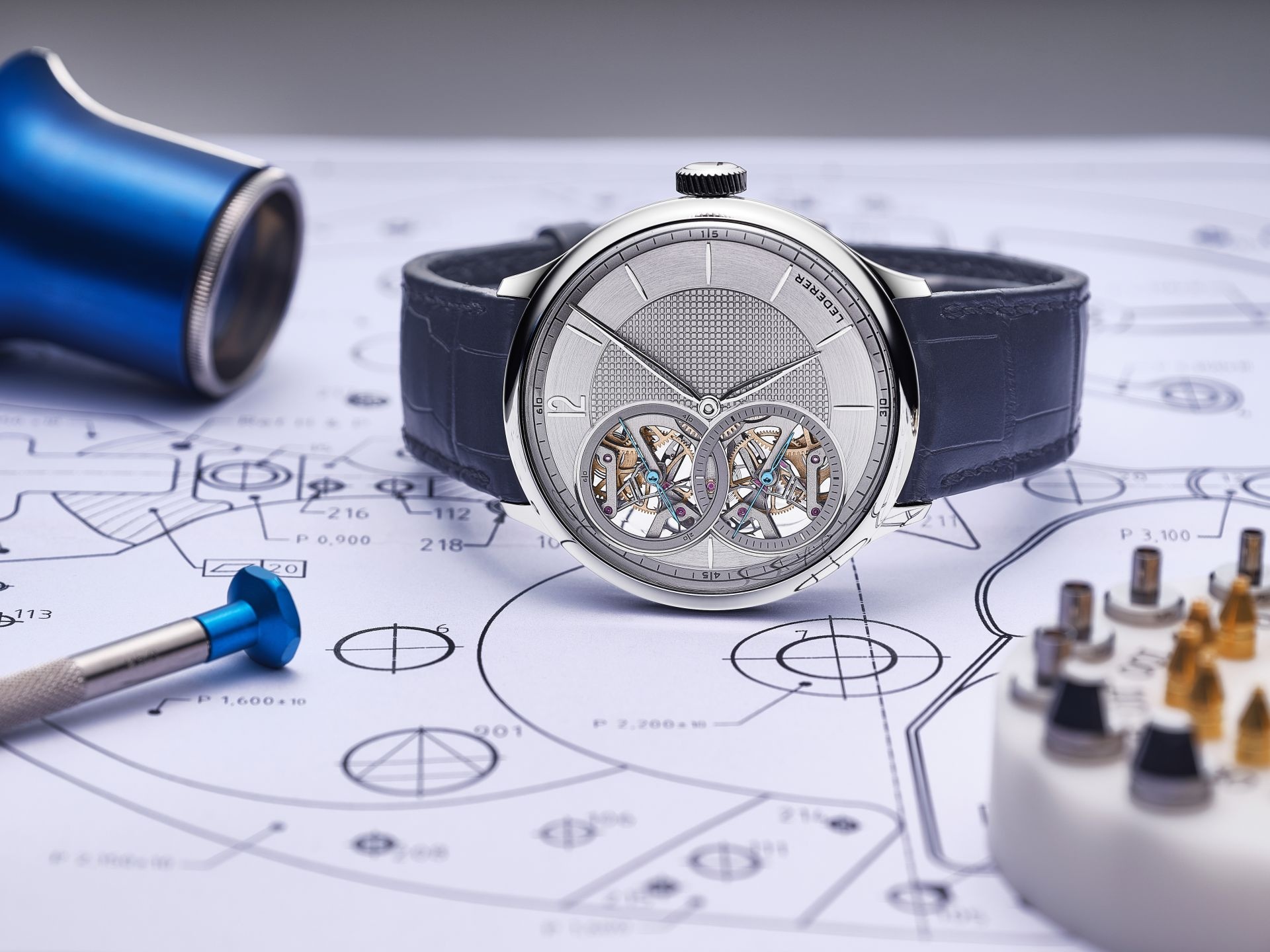



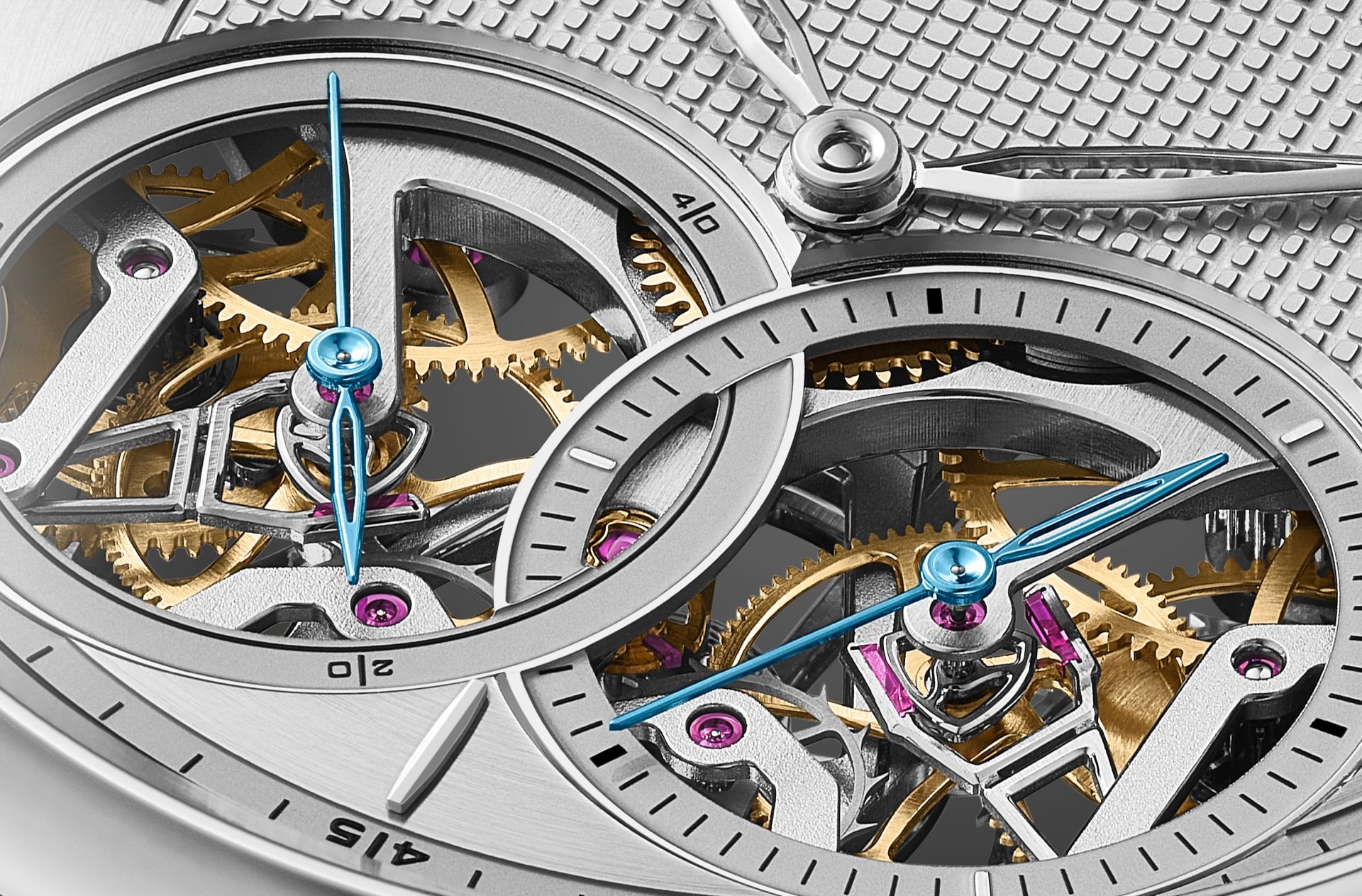

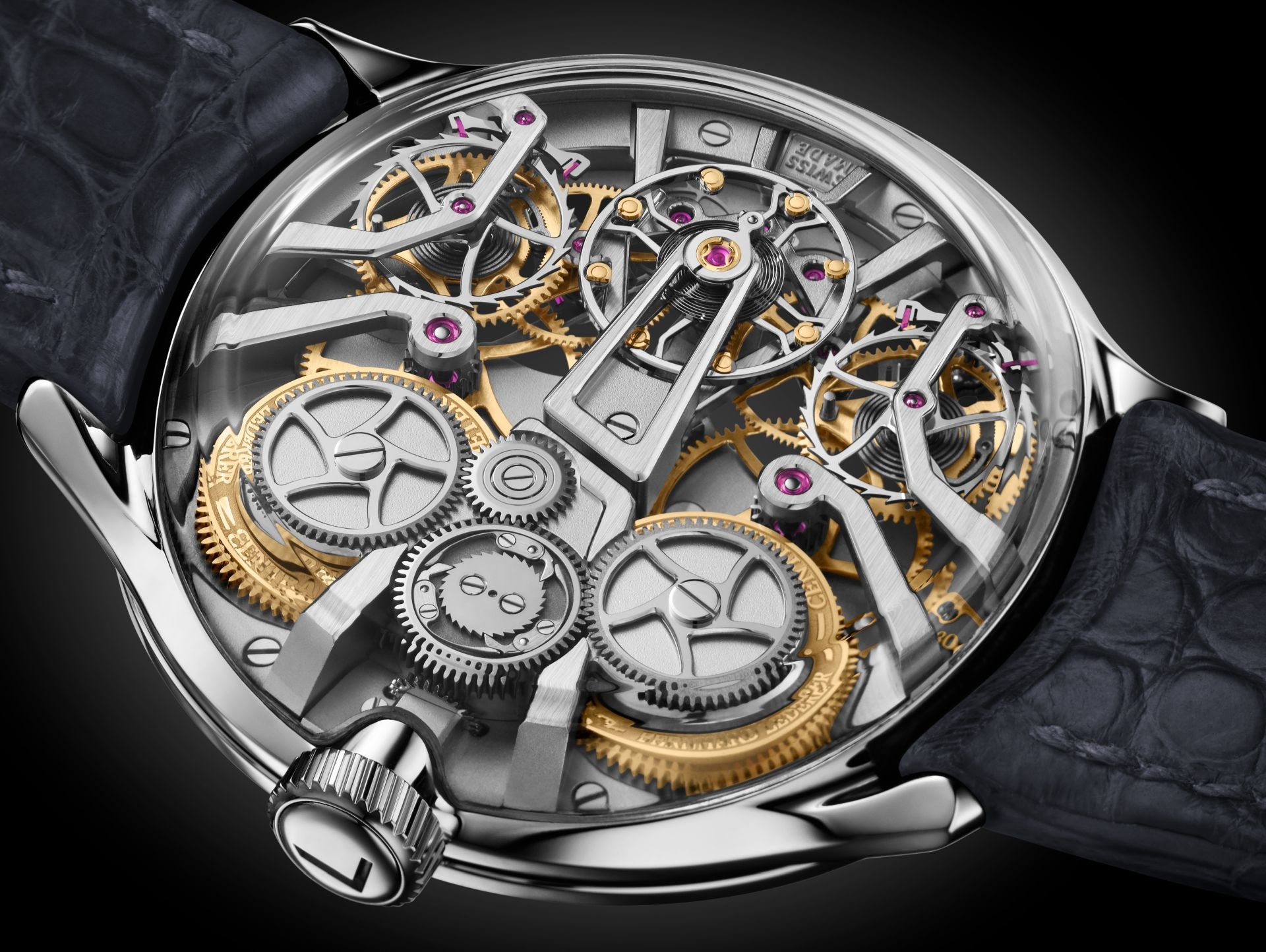


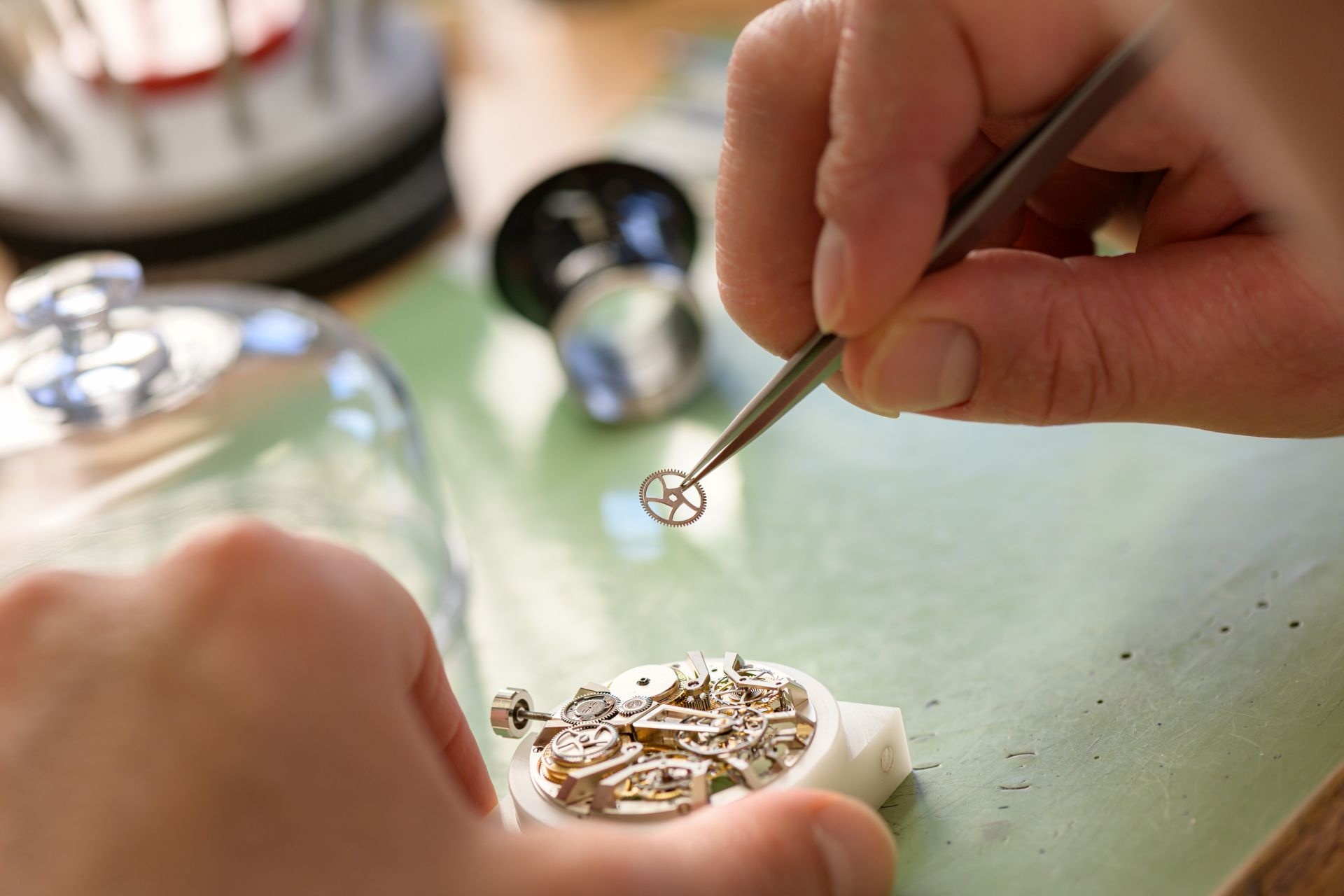

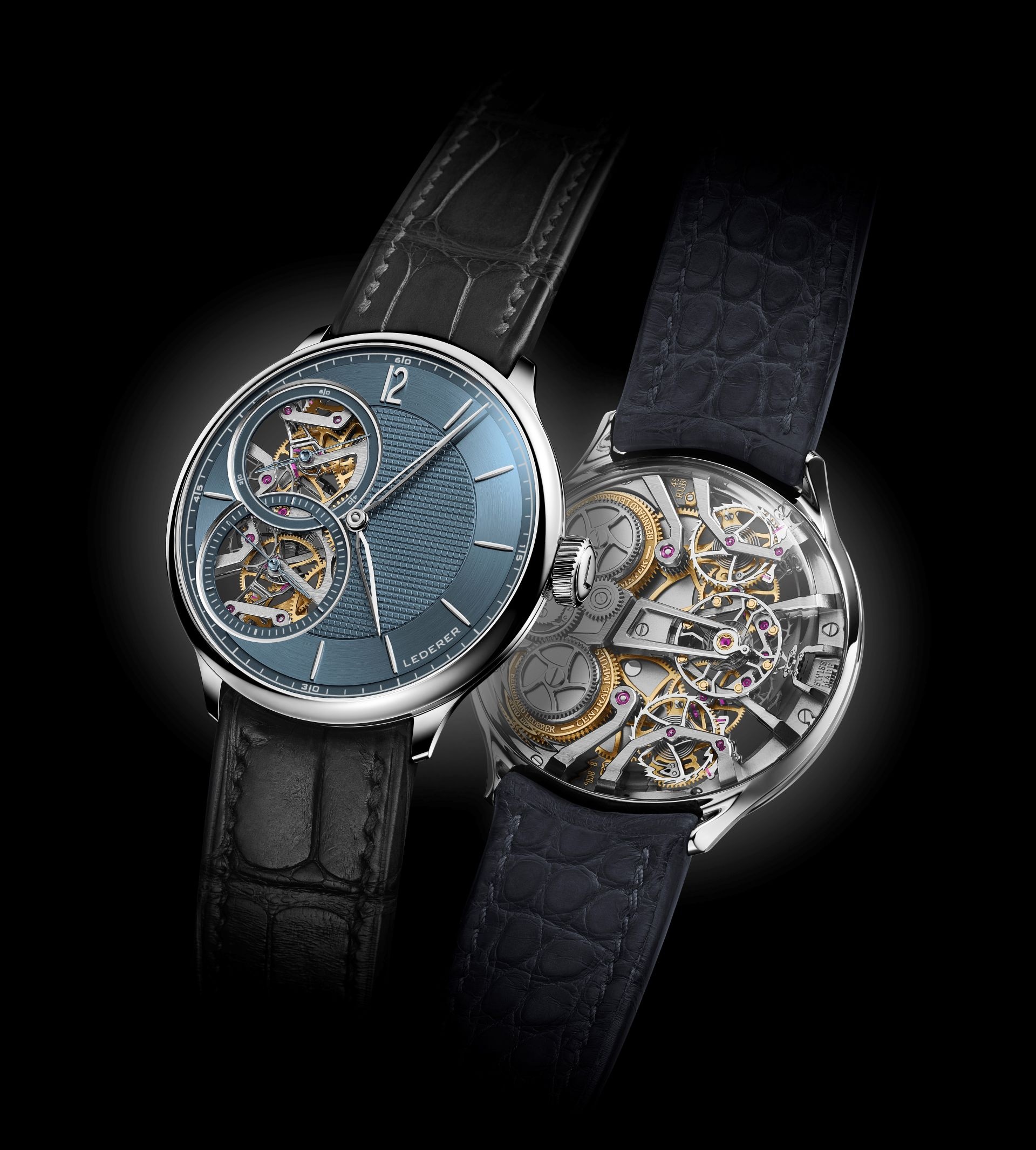
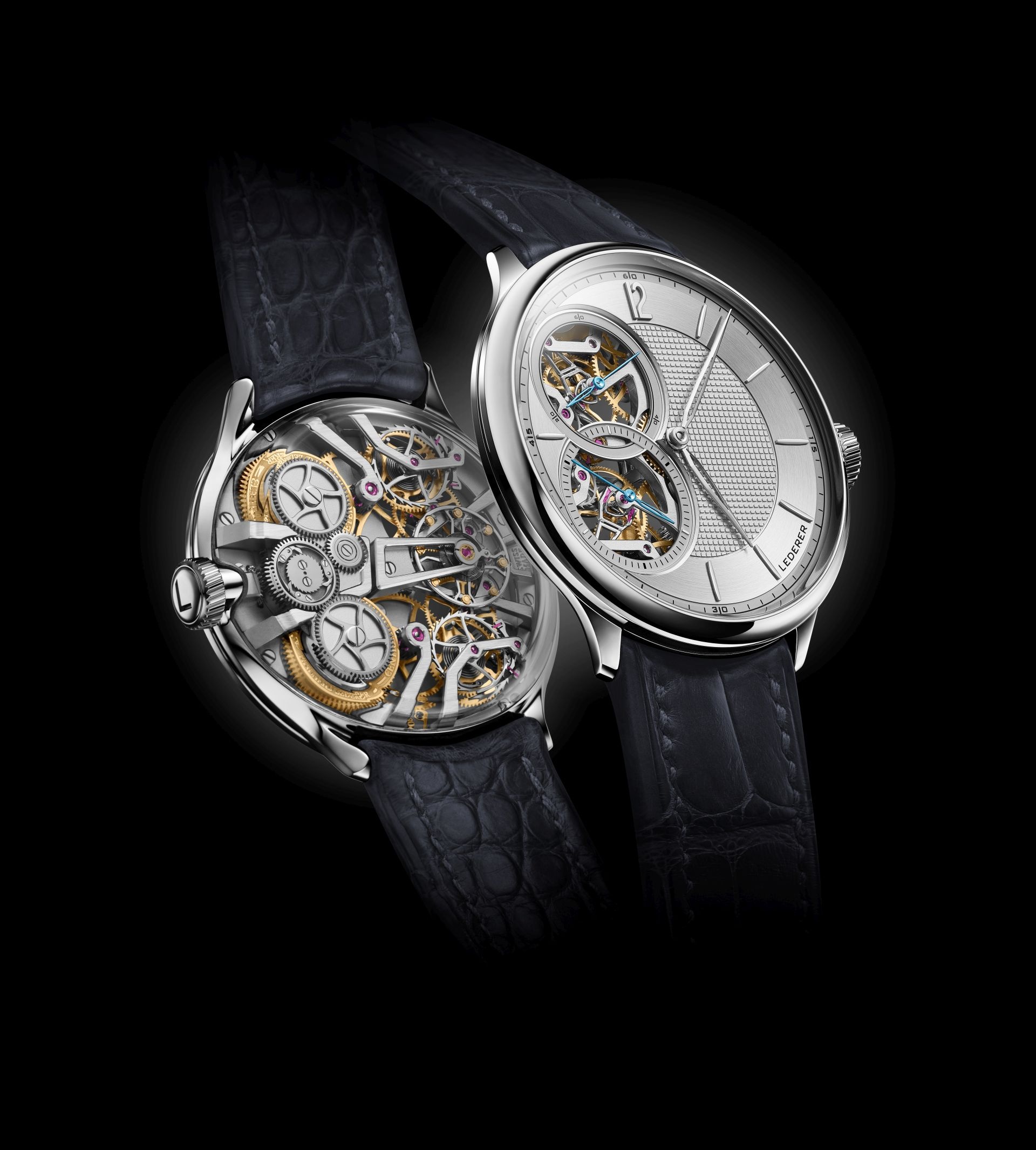
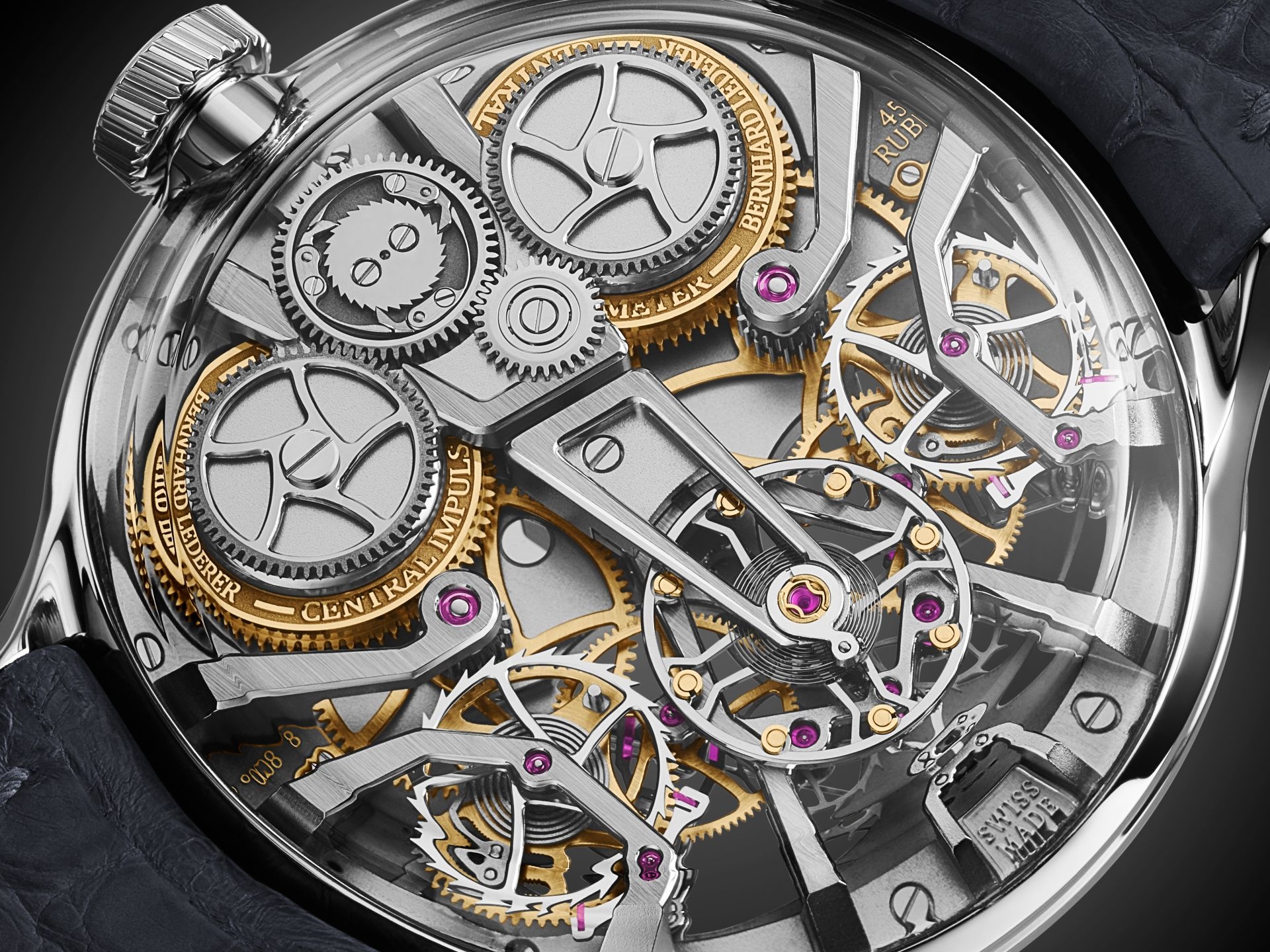
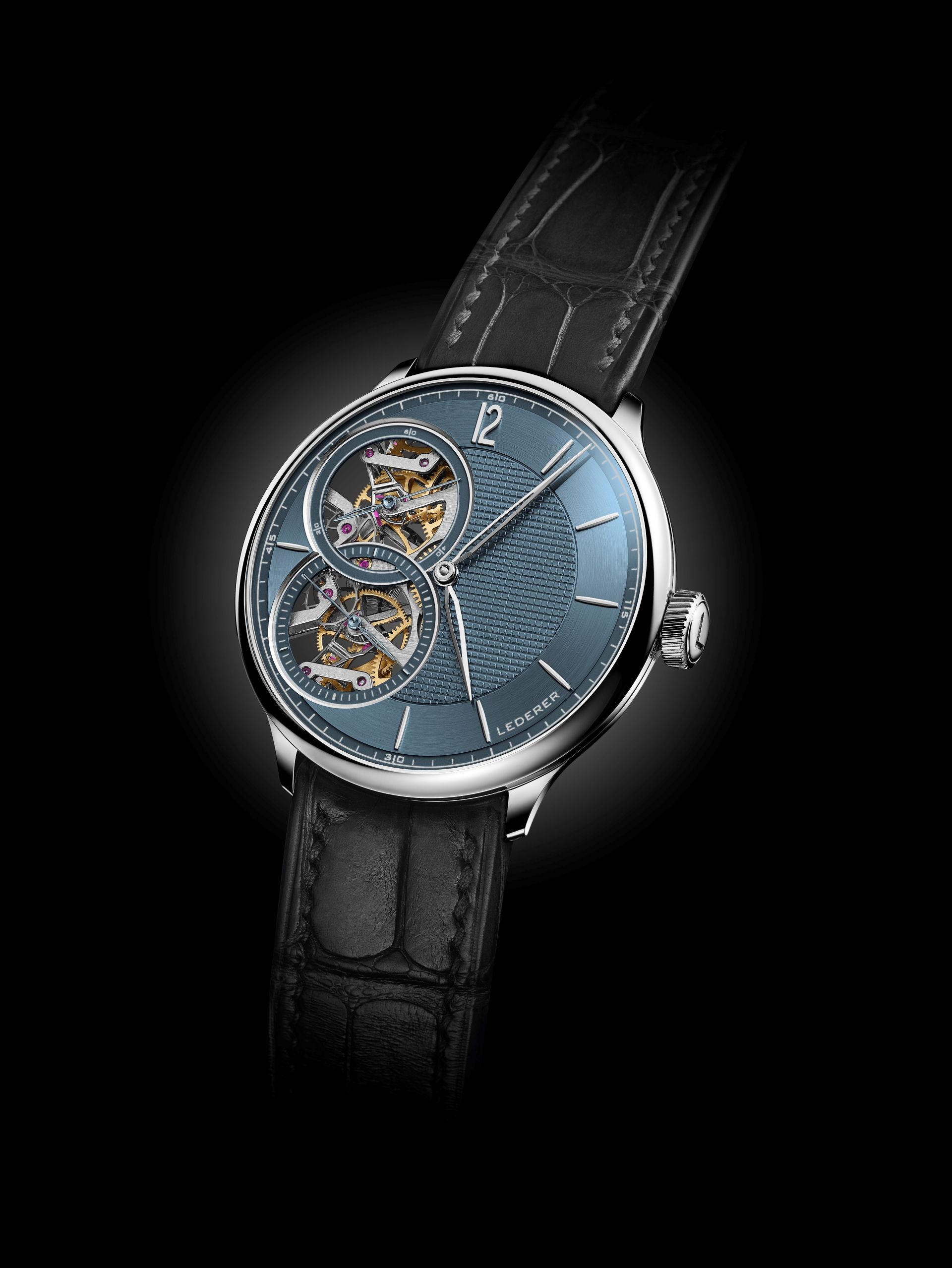

Comments
Leave a comment